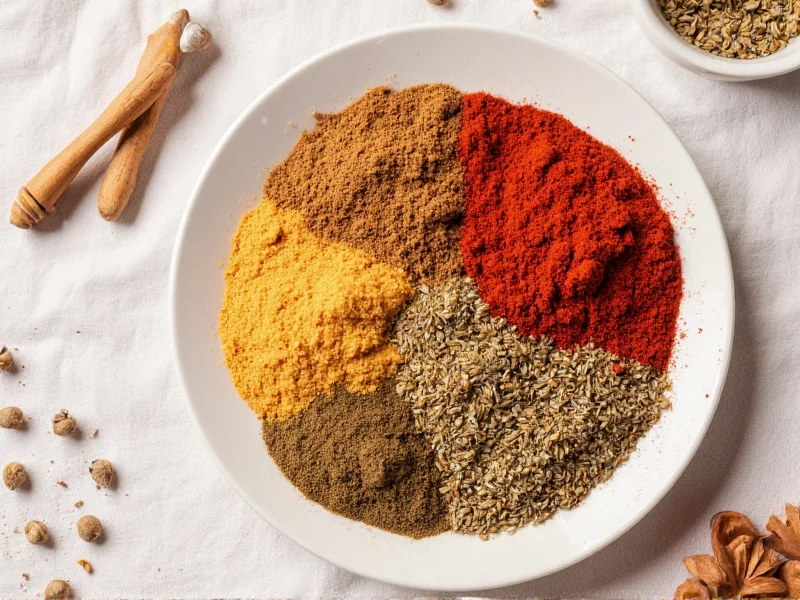Understanding spice shelf life helps maintain culinary quality without unnecessary waste. Unlike perishable foods, dried spices won't spoil in a way that causes foodborne illness, but their diminishing flavor profile significantly impacts cooking results. This comprehensive guide explains exactly how long different spices last, how to recognize when they've lost their punch, and science-backed storage methods to maximize their lifespan.
Understanding Spice Shelf Life vs. Food Safety
Many home cooks confuse loss of potency with actual spoilage. The U.S. Department of Agriculture confirms that dried herbs and spices remain safe indefinitely when stored properly. However, their essential oils—the compounds responsible for flavor and aroma—gradually evaporate. This chemical process, called volatilization, means your spices won't make you sick but will eventually fail to deliver the intended culinary impact.
Factors Affecting Spice Longevity
Three primary factors determine how long spices maintain optimal quality:
- Form: Whole spices (like peppercorns or cinnamon sticks) retain essential oils longer than ground versions
- Storage conditions: Exposure to heat, light, and humidity accelerates flavor degradation
- Initial quality: Freshly ground spices from whole sources outperform pre-ground supermarket varieties
How to Tell If Spices Have Lost Potency
Unlike perishable foods, spices rarely show obvious spoilage signs. Instead, use these sensory tests to assess quality:
- Smell test: Rub a small amount between your palms. If the aroma is faint or musty, potency has diminished
- Taste test: A pinch should deliver immediate, vibrant flavor. Weak or one-dimensional taste indicates degradation
- Color check: Faded pigmentation (especially in paprika, turmeric, and saffron) signals reduced potency
- Texture assessment: Clumping or moisture indicates improper storage but doesn't necessarily mean spoilage
Spice Shelf Life Reference Guide
| Spice Type | Whole Form Shelf Life | Ground Form Shelf Life | Key Potency Indicators |
|---|---|---|---|
| Peppercorns | 3-4 years | 1-2 years | Sharp aroma, uniform color |
| Cinnamon | 3-4 years | 1-2 years | Strong sweet-spicy scent |
| Cumin | 3-4 years | 1-2 years | Earthy aroma, deep color |
| Paprika | N/A | 1-1.5 years | Bright red color, no mustiness |
| Curry powder | N/A | 1-1.5 years | Complex aroma, no separation |
| Saffron | 2-3 years | N/A | Deep red threads, floral scent |
Optimal Spice Storage Techniques
Proper storage dramatically extends spice usability. Follow these evidence-based methods:
- Airtight containers: Use glass jars with tight seals to prevent moisture absorption and essential oil evaporation
- Cool, dark location: Store away from stoves, ovens, and windows—ideal temperature is below 70°F (21°C)
- Buy in small quantities: Purchase only what you'll use within 6-12 months for maximum freshness
- Grind as needed: Keep whole spices and use a dedicated grinder for optimal flavor release
- Avoid refrigerator storage: Temperature fluctuations cause condensation that degrades quality
When to Replace Your Spices
While safety isn't a concern, these practical guidelines help maintain culinary excellence:
- Replace ground spices after 18 months of regular use
- Discard whole spices showing visible moisture or mold (rare but possible with improper storage)
- Refresh spices before important meals or holiday cooking
- Consider replacement if dishes consistently lack expected flavor depth
Special Considerations for Blended Spices
Pre-mixed seasonings like curry powder, chili powder, and Italian herb blends have shorter lifespans than single-ingredient spices. The varying essential oil compositions interact and degrade faster. For best results, create small batches of custom blends as needed rather than storing large quantities.
Reviving Slightly Stale Spices
If your spices have diminished but not completely lost potency:
- Toast whole spices in a dry pan for 1-2 minutes to reactivate essential oils
- Use slightly larger quantities in cooking (but avoid overcompensation)
- Combine with fresh citrus zest to enhance remaining flavor compounds
Debunking Common Spice Myths
Several misconceptions persist about spice shelf life:
- Myth: Expired spices can make you sick
Fact: No documented cases exist of illness from aged spices—only flavor loss - Myth: Freezing extends spice life
Fact: Temperature fluctuations during removal cause condensation that damages quality - Myth: Darker color always means better quality
Fact: Some spices naturally fade while maintaining flavor; rely on smell and taste tests
Practical Spice Management System
Implement this simple organization method:
- Label all containers with purchase date using masking tape
- Arrange spices alphabetically for quick identification
- Conduct seasonal reviews (spring and fall) to assess freshness
- Store infrequently used spices in the freezer only if absolutely necessary (with desiccant packets)











 浙公网安备
33010002000092号
浙公网安备
33010002000092号 浙B2-20120091-4
浙B2-20120091-4